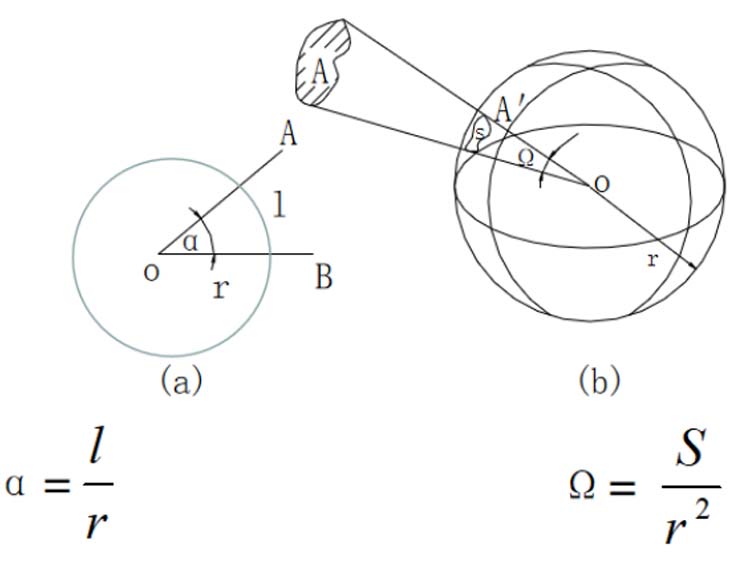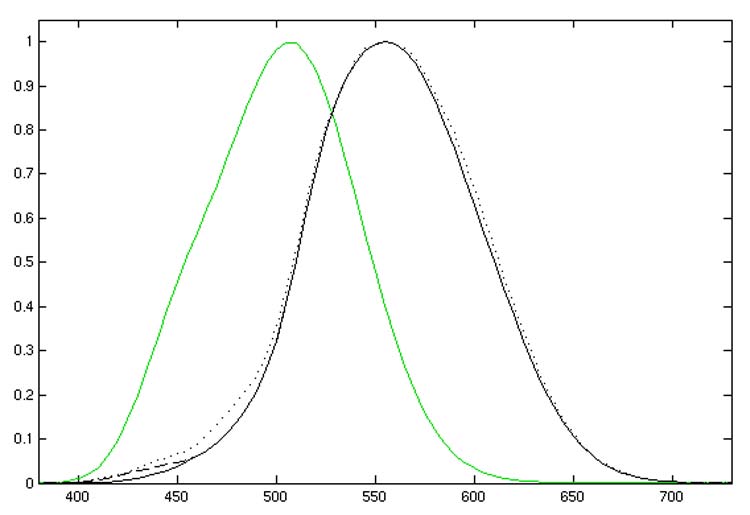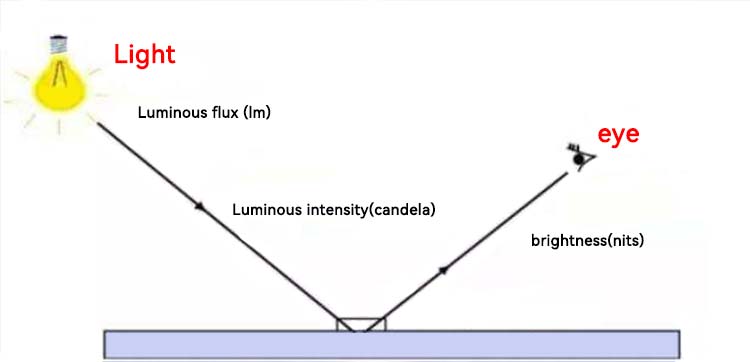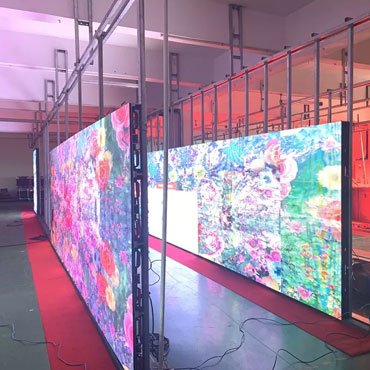Since the existence of humanity, darkness has been the obstacle on the path to happiness for all humans and the source of human fear.
The invention of electric light became a decisive step in overcoming darkness, liberating humanity from the night completely. At this point, some people began to ponder a question: How should we judge the strength of light?
The most direct method is to rely on the human eye to judge the strength of light. However, this only provides us with a bunch of adjectives, such as dim, faint, dimly lit, bright, dazzling, and so on.
This ambiguous information can vary from person to person, making it difficult for us to compare when needed. Therefore, we urgently need to provide a quantitative description of the strength of light, allowing light sources to have their own units and definitions.
The initial definition of light intensity
About two hundred years ago, people found a rough way to measure the strength of light, called the foot-candle:
It is the energy density of light gathered on one square inch of surface when observing a one-foot-long candle (about one pound in weight) burning horizontally.
This rough measurement method laid the foundation for the “whale oil” adopted by the Urban Gas Lighting Act in Britain in 1860, as well as later standard light sources such as vegetable oil lamps and pentane lamps.
Improvements in luminous units
However, with the development of science, the rough measurement method could not adapt to the increasing variety of luminous objects. So, in 1948, at the Ninth International Conference on Weights and Measures, it was decided to adopt a blackbody at the temperature of the solidification point of platinum as the standard for luminous intensity, and the candela was established as the new unit of luminous intensity.

During its use, it was found that the previous definition had significant errors. Ultimately, at the Sixteenth International Conference on Weights and Measures in 1979, it was decided to adopt the current new definition. The new definition states:
The candela is the luminous intensity of a monochromatic radiation source emitting at a frequency of 540 x 10^12 Hz in a given direction, with a radiation intensity of 1/683 W/sr in that direction.
By this point, many of you might already be confused by a bunch of unit names. Don’t worry, let’s take a closer look at them one by one.
What is a Candela?
Keen-eyed readers may have noticed that the English name for “candela” is the same as “candle.” As mentioned earlier, candlepower was previously used as the unit of luminous intensity, and later it was standardized to use the candela (abbreviated as cd) as the unit.

Candela refers to the luminous flux (the physical quantity of optical power) emitted by a light source within unit solid angle in a specified direction.
Candlepower, lumen, and candela conversion formula
1 candlepower = 1 lumen = 1 candela multiplied by steradian, i.e., 1 fc = 1 lm = 1 cd * sr
We often see another optical physics unit that appears as frequently as the candela – the nit. What’s the relationship between the two?
What is a Nit?
A nit is a unit specifically used to measure brightness. 1 nit = 1 cd/m², so it can be considered that a nit is an old term for measuring the strength of light, while candela per square meter (cd/m²) is a new term.
What is the difference between Candela and Nit?
From the above formula, we can see that the two are equivalent. However, strictly speaking, there are differences between them. The candela is a unit of light intensity, while the nit is a unit of brightness.
Additionally, the unit of light intensity is a standard measurable unit based on physical definitions, but the unit of brightness is only a subjective measure of light by the human eye. In simple terms, light intensity can be scientifically measured, while brightness is measured by the eye’s perception of light.

What is the relationship between Nit and Lumen?
When we mention nit, we often mention lumen as well. So, what is the relationship between them? The lumen is the unit of luminous flux, representing the radiant power that the eye can perceive. 1 nit is approximately equal to 0.093 lumens per square foot.
Let’s further understand the relationship between them through a hypothetical example.
Suppose there is a screen with dimensions of 2 meters by 1.5 meters, with a screen gain factor of 1.2, and the measured luminous flux is 2000 lumens. Then, using a formula for converting nit to lumen:
Nit = Lumen × Screen Gain / (Factor × Screen Size)
We can calculate that the final projected image would be 2000 * 1.2 / (0.635 * 2 * 3.1415926 * 2 * 1.5) = 200.51 nits.
How does understanding nits help in daily life?
We’ve discussed so many conversions related to different photometric units to help us choose products with better performance while being more energy-efficient and environmentally friendly. Because the market is full of mixed offerings, some merchants may claim 8000 nits, 12000 nits, or even 20000 nits just to attract customers, while in reality, they may not even reach 5000 nits.
Is higher nit better?
Merchants keep pushing for higher nits, but is higher nit always better? The answer is no.
Indeed, higher nits are more suitable for outdoor use, but obviously excessively high nits can affect heat dissipation. Let’s consider a common scenario we encounter in daily life: when we use our phones in bright sunlight, we often need to adjust the screen brightness to the maximum to see incoming messages clearly.
However, shortly after, the phone will start heating up, forcing us to either find a cooler spot or quickly finish our conversation.
Therefore, excessively high nits only lead to increased prices, and in reality, we don’t operate devices under such high nits for long periods. Not only does this significantly shorten the lifespan of the device, but it may also require us to reduce nit usage due to issues like overheating and overly bright screens.
What is the ideal nit level?
Smartphones: 200 nits indoors, 400 nits outdoors
When using a smartphone indoors, the typical brightness is usually between 200–300 nits, but when outdoors, it’s usually necessary to increase it to 400–500 nits; otherwise, you may need to find a shaded area to view the screen clearly.
Of course, if you often read outdoors, it’s recommended to switch to a device with an e-ink display. Such devices perform exceptionally well in bright light and are very power-efficient.
Computers/Laptops: 200–500 nits
Computers and laptops are typically used indoors, so they don’t require very high nit levels, unless you’re gaming. According to game developers’ evaluations, in large 3D games, computers or laptops with high nits or HDR (high dynamic range) display quality provide a more perfect gaming experience.
Televisions: 200–2000+ nits
Most televisions on the market today are LCD or plasma televisions that range from 200 to 500 nits. However, some ultra-high-definition 4K and 8K televisions can reach 4000 nits or more.
Large Outdoor Advertisements: 4000–10000 nits
In contrast to indoor applications, large outdoor advertisements are used under intense sunlight for extended periods. If the nit level is too low, the content may become completely unreadable. For example, most outdoor LED displays on the market have nits exceeding 4000, and some larger-pitch (such as P10, P16) outdoor LED displays can even reach 7000 or 10000 nits.
In order to help everyone better understand various photometric units, here are some physical formulas to help explain the relationship between units, lumens and brightness:
Relationship between nits, lumens, and luminance:
Nits to Lumens Conversion:
Lumens= Nits ×Display Area (in ㎡)
Lumens to Nits Conversion:
Nits=Nits×Display Area (in ㎡)
Luminance Calculation (in nits):
Luminance(innits)=Brightness (in nits)/π×(Distance from Display)²
Luminance Calculation (in candelas per square meter):
Luminance = Brightness (in cd/㎡)×Reflectivity
Through the above formula conversion, I believe you can have a deeper understanding of various photometric units.




